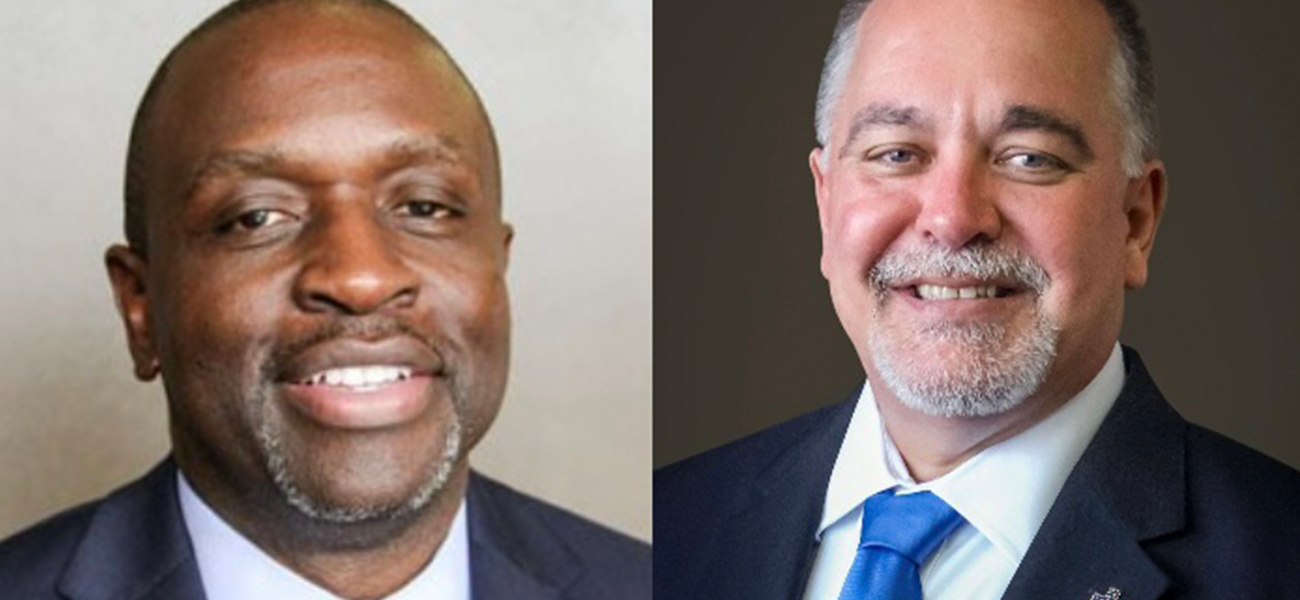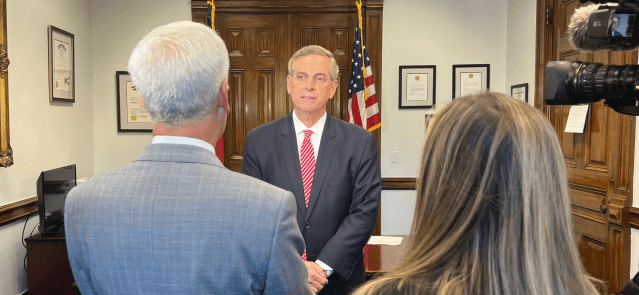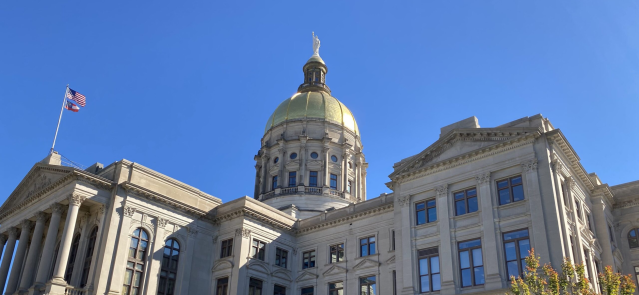Stay ahead of the curve as a political insider with deep policy analysis, daily briefings and policy-shaping tools.
Request a Demo
Left: Eric Thomas; right: Richard Woods (Credit: Georgia Department of Education)
- Program for thousands of struggling students caves in three years.
- Tension built between program leader and state schools chief.
- Audit targets consultant fees and spotty oversight.
Amid Cooper-Carver’s success, Peters said she heard complaints from some school leaders about their districts’ assigned specialists. Alexander, who mainly focused on Randolph County schools, heard officials at the Richmond County School Systems were talking about dropping the office entirely.
Before long, the two largest school districts under the program – Richmond County and Savannah-Chatham County – stopped working with specialists. Representatives from those districts declined or could not be reached for interview requests to discuss why.
Discontent from some districts was also relayed to Cecily Harsch-Kinnane, the policy and outreach coordinator for the advocacy group Public Education Matters Georgia. Like many local school advocates, she traced the turnaround office’s downfall partly to how it was set up.
“What it had going was promising,” said Harsch-Kinnane, who formerly served on the Atlanta Board of Education. “But it was always a turf war of sorts.”
The turnaround program emerged after a failed push in 2015 by lawmakers backed by then-Gov. Nathan Deal to create a different program called the Opportunity School District, which could assume control of failing public schools in Georgia. School leaders, teachers, parents and voters across the state squashed that program almost as soon as it reared its head, bashing it as an unwanted power grab by the state to take over local schools. Mistrust lingered in the education community when the Chief Turnaround Office was pitched as a compromise idea in 2017.
“This was a difficult issue to take on back then,” said former Rep. Kevin Tanner, who sponsored a bill to create the turnaround office. “The educational community was very skeptical.”
Keeping the turnaround office separate from Woods’ larger agency was done partly to avoid another clash over state takeover, said Tanner, who is now the county manager for Forsyth County. The approach won support from the legislature’s majority Republican members and powerful Democratic leaders such as 2018 gubernatorial candidate Stacey Abrams. But seven local school advocates interviewed for this story all agreed the split between Thomas’ turnaround program and Woods’ state agency created friction from the start, particularly since the state already had a division under Woods that worked with struggling schools.
“It was creating a duplicative department,” said Lisa Morgan, president of the Georgia Association of Educators. “Politics reigned supreme rather than thinking what’s best for our students and educators.”
Support for the turnaround program waned after Gov. Brian Kemp took office in 2019, shortly before Woods lobbied lawmakers to bring the quasi-independent program under his direct watch. Kemp showed less interest in continuing the program than did his predecessor Deal, according to advocates. He also appointed several new state education board members who were not involved in the program’s creation.
Thomas, the turnaround chief, noticed collaboration with Woods tapering off after the program’s first six months, giving the impression that he and his staff were being iced out despite a mandate from the state legislature that the two offices work together, records show. Woods’ office also still controlled the purse strings for federal struggling-school funds, including disbursements of $3.6 million that went to 10 rural schools not working with the turnaround program. Thomas concluded in a January 2020 report that “decisions to not collaborate and to not prioritize funding for (turnaround) schools were wrong.”
A spokeswoman for the state education department said Woods did meet with Thomas “multiple times throughout his tenure,” though noted “several instances” in which Thomas requested meetings with “extremely short notice” or “was unwilling to meet” with some of Woods’ staff. The spokeswoman also disputed claims that the state withheld federal funding to schools under Thomas’ charge, saying many schools did receive funding while some “were not federally identified” to qualify.
“The arrangement presented challenges largely due to lack of alignment and oversight,” said the state agency’s communications director, Meghan Frick. “Having fiscal and legal responsibility for a program over which we did not have direct oversight or supervision put the agency in a difficult position.”
Meanwhile, some advocates wondered if the turnaround program was jogging in place. Meetings with an advisory group hinted at little progress as Thomas delivered what sounded like the same updates month after month, said John Zauner, executive director of the Georgia School Superintendents Association.
“There were certainly some red flags as time went on in the meetings,” Zauner said in a recent interview. “There wasn’t any moving the football down the field, if you will.”
Then came the audit of the turnaround program in late 2019.
NEXT
Part IV: Audit questions contractor pay
Header image: Left: Eric Thomas; right: Richard Woods (Credit: Georgia Department of Education)
Gov. Kemp calls on state agencies to be fiscally restrained amid record $16.5B surplus
The Gist Gov. Brian Kemp asked the state’s 51 government agencies for continued fiscal restraint when drafting their amended fiscal year 2025 and 2026 budgets. Most agencies adhered to his request even as the state’s general fund surplus hit a record $16.5 billion last month. Forty-five agencies, excluding state courts, followed the governor’s instructions to …
Georgia defies bomb threats as election chief declares a “free, fair and fast” vote amid record turnout
ATLANTA – Despite dealing with over 60 bomb threats, Georgia’s election chief said Tuesday the state’s general election went smoothly. Georgia had a record turnout with nearly 5.3 million people voting, Secretary of State Brad Raffensperger told reporters. Election officials in the state’s 159 counties have until 5 p.m. to certify votes. “We had a …
In the (state)house: Meet the newest members of the Georgia legislature
When lawmakers reconvene at the state Capitol on Jan. 13, there’ll be a cadre of new faces in the 236-member Georgia General Assembly, one of the nation’s largest state legislatures. All 236 statehouse seats were up for election this year. Most candidates ran unopposed. Incumbents in contested races easily kept their seats, with the exception …
2 young Democrats win Statehouse seats as Republicans hold majority
ATLANTA — Many Statehouse incumbents appeared to beat back challengers Tuesday, ensuring their return to the Capitol in January. Republicans retain control of the House and Senate. Two Generation Z candidates will join the 236-member Legislature as new members of the House of Representatives: Democrats Bryce Berry and Gabriel Sanchez. Berry, a 22-year-old Atlanta middle …




